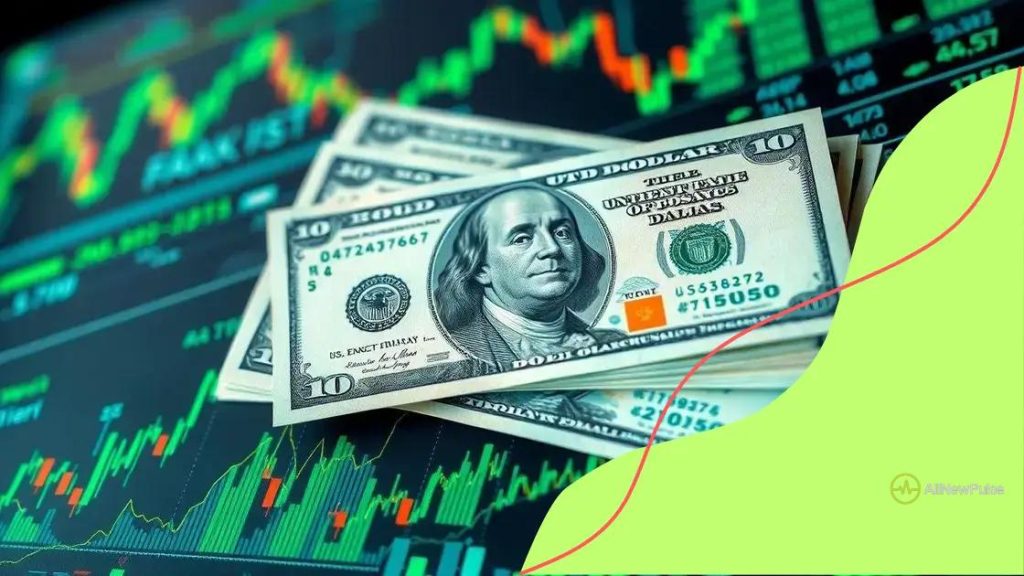Assessing the strength of the US dollar: why it matters

Assessing the strength of the US dollar is vital for understanding its impact on consumer prices, international trade, and investment strategies, as fluctuations can significantly influence economic decisions.
Assessing the strength of the US dollar is essential in today’s ever-changing economy. Have you ever wondered how a strong or weak dollar affects your wallet or investments? Let’s dive into this topic to see its real-world implications.
Understanding the US dollar’s historical value
Understanding the US dollar’s historical value is essential for grasping its current strength and future trends. The dollar, as the world’s primary reserve currency, has a rich history that has shaped global finance.
The US dollar originated in 1792, guided by the Coinage Act which established it as a standard for measuring currency value. Initially, it was backed by precious metals. This backing ensured trust in its value. As the country grew, so did the influence of the dollar.
The Gold Standard Era
In the late 19th century, the US transitioned to the Gold Standard. This meant that the dollar’s value was directly linked to a specific amount of gold. It provided stability and predictability in international trade. However, this system was not without its challenges, particularly during economic downturns.
Challenges and Changes
During the Great Depression, the US abandoned the Gold Standard, which allowed for more flexibility in monetary policy. By 1971, President Nixon officially ended the dollar’s convertibility into gold. This marked the shift to a fiat currency system, where the dollar’s value is not based on physical commodities but rather on trust and economic stability.
- Fiat currency allows for more responsive economic policies.
- The value of the dollar now depends on supply and demand dynamics.
- Inflation and interest rates significantly affect dollar strength.
Throughout its history, the dollar has seen significant fluctuations in value. Major events, such as World War II and financial crises, have led to shifts in its strength. Understanding these historical contexts helps consumers and investors anticipate potential future changes.
Today, the dollar remains robust, influenced by various factors including interest rates, inflation, and geopolitical events. Tracking these elements is essential for making informed financial decisions. The historical trajectory of the dollar illustrates its resilience and adaptability in a changing world.
As we assess the strength of the US dollar now, we can appreciate the complex factors that have shaped its history. This understanding is crucial for navigating the future of finance and commerce.
Factors affecting the US dollar’s strength
Several factors significantly affect the strength of the US dollar. Understanding these factors helps individuals and investors make informed decisions about their finances.
One major factor is interest rates. When the Federal Reserve increases interest rates, it often leads to a stronger dollar. Higher rates attract foreign investment, increasing demand for the dollar. Conversely, lower interest rates can weaken it.
Inflation Rates
Inflation also plays a critical role. If inflation in the US rises significantly, the dollar may lose value. This happens because higher prices erode purchasing power. Investors often consider inflation rates when deciding how to invest their money.
Economic Growth
Another vital factor is economic growth. A growing economy typically strengthens the dollar. Strong economic data, like low unemployment and rising GDP, boosts investor confidence. This creates higher demand for the dollar both domestically and internationally.
- Global political stability can also impact the dollar.
- Trade balances affect how much currency is in circulation.
- Market speculation can influence short-term dollar strength.
Geopolitical events can create uncertainty, impacting the dollar’s value. For instance, political instability may lead investors to seek safe-haven currencies like the dollar. This often results in a stronger dollar against other currencies.
Understanding these dynamics gives investors key insights into potential dollar movements. Analyzing interest rates, inflation, and other economic indicators can offer valuable signals for future trends. As we assess the strength of the dollar, it’s essential to keep these factors in mind.
Impact of the US dollar on global trade

The US dollar plays a crucial role in global trade. Many countries rely on the dollar as their primary currency for transactions. This impacts how goods and services are exchanged around the world.
When the dollar is strong, it can make imports cheaper for the US. This means that American consumers pay less for products from other countries. However, a strong dollar can hurt US exporters. Their goods become more expensive for foreign buyers, potentially reducing sales.
Exchange Rates
The value of the dollar compared to other currencies, known as the exchange rate, greatly influences trade. If the dollar strengthens against foreign currencies, American consumers find international goods more affordable.
Trade Balances
On the other hand, a weak dollar can boost exports. American products become less expensive for other countries to purchase. This can lead to increased demand for US goods, positively impacting the trade balance.
- Countries often hold dollars as reserves to stabilize their own currencies.
- The dollar’s strength can influence commodity prices, including oil and gold.
- Fluctuations in the dollar can create uncertainty in international markets.
Moreover, the dominance of the dollar in global markets affects international relations. Countries that trade in dollars often have stronger economic ties. This can lead to more stable relationships, as trade relies on trust in the currency’s value.
In summary, the impact of the US dollar on global trade is profound. Its fluctuations can alter economic dynamics both in the US and around the world. Understanding these effects helps businesses and consumers navigate the complexities of international commerce.
How fluctuations in the dollar affect consumers
Fluctuations in the dollar significantly affect consumers in various ways. Understanding these impacts can help individuals make better financial decisions.
When the dollar strengthens, imported goods often become cheaper. This means that products like electronics, clothing, and food may cost less for American consumers. Shoppers might notice lower prices in stores or online for items sourced from abroad.
Impact on Prices
Conversely, when the dollar weakens, imported goods become more expensive. This may lead to higher prices at the register. For example, if the dollar loses value, a consumer might pay more for a smartphone or foreign brand products.
Everyday Expenses
Fluctuations in the dollar also affect everyday costs. For instance, as gas prices are often tied to the dollar’s value against oil, a weaker dollar can lead to higher fuel costs. This impacts commuting, travel, and even the cost of food delivery, as transportation expenses rise.
- A strong dollar can lower the costs of vacations abroad.
- Shopping online from international retailers may be cheaper when the dollar is strong.
- Conversely, a weak dollar can increase the cost of international travel.
Moreover, inflation can creep in when the dollar weakens. Consumers may find that even domestic products become pricier as companies pass on the costs of imports to customers. As prices rise, budgets tighten, and spending habits often shift.
In summary, the value of the dollar directly impacts consumer purchasing power. Being aware of these fluctuations helps individuals navigate their spending, saving, and investment choices in a dynamic economic environment.
Strategies to invest with the dollar’s strength in mind
Investing with the dollar’s strength in mind can help individuals make smarter financial choices. Understanding how to navigate this landscape is crucial for building a strong investment portfolio.
One effective strategy is to diversify investments. By spreading money across various asset classes, such as stocks, bonds, and commodities, investors can minimize risk. This approach helps protect against potential losses when the dollar fluctuates.
Investing in Foreign Assets
Another strategy involves considering foreign investments. When the dollar is strong, buying foreign assets may provide better returns when converting back to dollars. This means investing in international stocks or real estate can be beneficial, especially when the dollar value increases.
Focus on Commodities
Investing in commodities like gold or oil can also be wise. As the dollar strengthens, the prices of these commodities often drop. Buying when prices are low can lead to profit when the dollar weakens or commodity prices rise.
- Real estate can be a safe investment during dollar fluctuations.
- Look for opportunities in emerging markets when the dollar is strong.
- Regularly reassess your portfolio to adjust for changing dollar values.
Additionally, currency ETFs (Exchange-Traded Funds) can be a valuable tool. They allow investors to gain exposure to currency fluctuations directly. Monitoring these investments can help capitalize on changes in the dollar’s strength.
Overall, keeping an eye on economic indicators can guide timing for investments. Understanding how the dollar moves in relation to global economic conditions ensures informed financial decisions. Preparing for both strengths and weaknesses in the dollar helps build a resilient investment strategy.
FAQ – Questions about the strength of the US dollar and its impact
How does a strong dollar affect consumer prices?
A strong dollar typically makes imported goods cheaper, leading to lower consumer prices on products from abroad.
What are the best investment strategies with a fluctuating dollar?
Diversifying investments, considering foreign assets, and investing in commodities can help mitigate risks associated with dollar fluctuations.
How does the dollar’s value influence international trade?
A strong dollar can make US exports more expensive for foreign buyers, while a weak dollar can boost demand for US goods abroad.
Why is it important to stay informed about the dollar’s strength?
Being aware of the dollar’s strength helps consumers and investors make better financial decisions, adjust spending habits, and optimize investment strategies.





